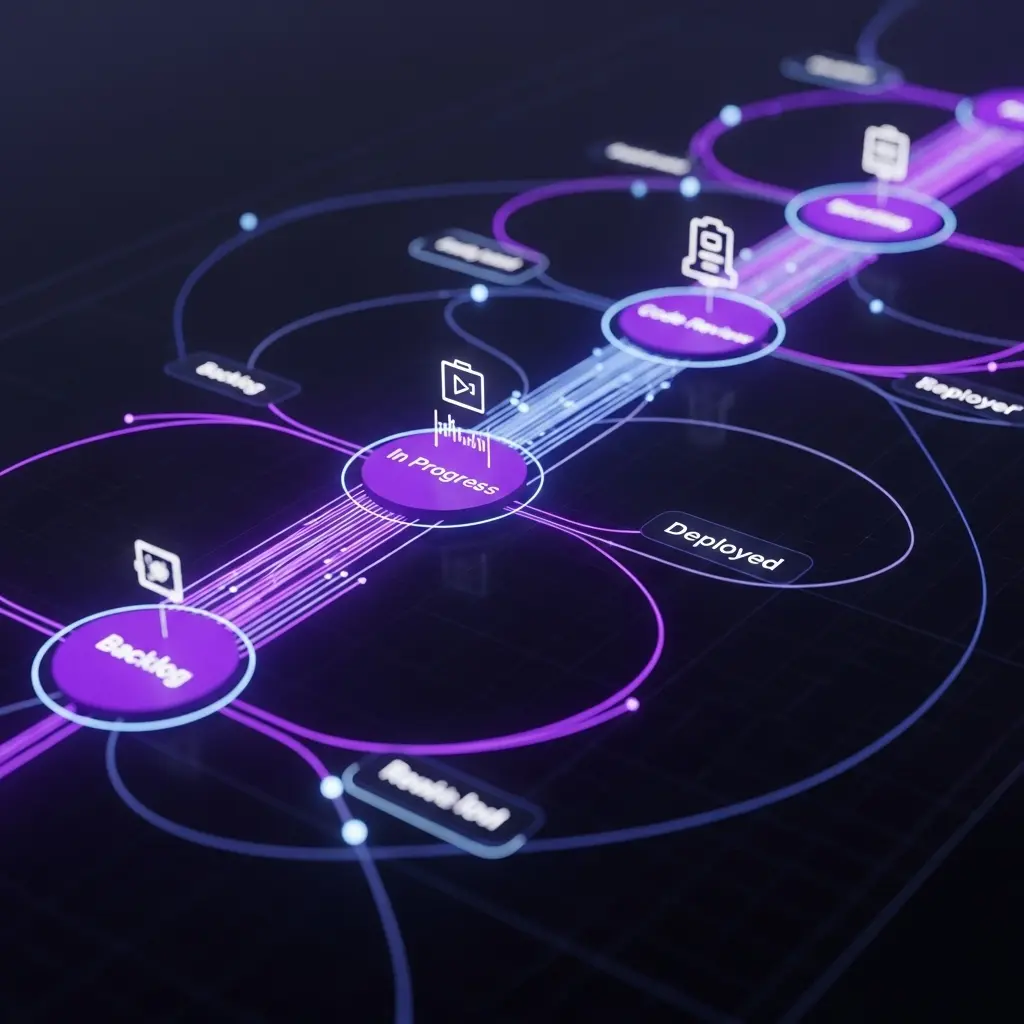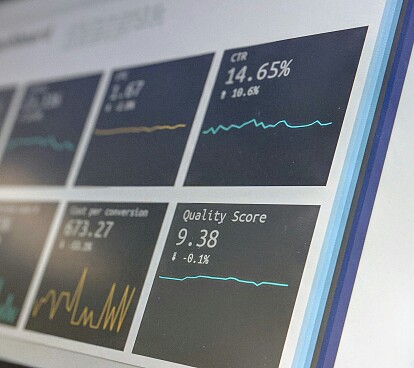
The potential of Process Mining in SAFe environments
July 31, 2025
How Process Mining revolutionizes SAFe environments
For those of us managing the Software Development Lifecycle (SDLC) in complex frameworks like SAFe, the pursuit of efficiency and predictability is a constant. Despite the discipline that frameworks like SAFe enforce, the SDLC can often feel like a black box—even to the most technical stakeholders. We rely on ceremonies, agile metrics, and the experience of our teams, but we still face both old and new challenges: cost overruns, delays, and a persistent disconnect between development operations and business objectives.
From black box to total transparency
The problem lies in the fact that traditional metrics often provide a false sense of precision around aspects that deliver little real value. Counting story points, hours, or lines of code doesn’t uncover the systemic inefficiencies that hinder our value stream. This is where Process Mining emerges, not as just another layer of governance, but as a fundamental diagnostic tool:
By connecting to the metadata from our existing tools (from Jira and Azure DevOps to Git and CI/CD platforms), Process Mining creates a digital twin of our SDLC, enabling us to see how work actually flows, where it gets stuck, and where rework erodes our productive capacity.
Here an image that visually represents an optimized SDLC thanks to the visibility enabled by Process Mining:

Towards an open Software Development Lifecycle: A Framework for optimization
Process Mining allows us to transform a closed and opaque SDLC into an open one:
- **Observable.
- Predictable.
- Efficient.
- Nimble.
In a SAFe environment, this has direct implications for the execution of Program Increments (PIs).
1. Observable: The foundation of any improvement
The first step is to achieve true end-to-end visibility. Process Mining ingests data from all lifecycle tools to build a visual model of the process. However, the real challenge—especially in SAFe—is normalizing data from multiple teams, methodologies (Scrum, Kanban), and value streams. A transformation layer is essential to create a common language that allows comparison of disparate processes. This helps confirm whether teams are following the established processes or deviating from them—and more importantly, understand why.
2. Predictable: From estimation to data-driven forecasting
Once the process is observable, it becomes predictable. Instead of relying solely on estimates for PI planning, we can use historical data and behavior patterns to reliably forecast delivery dates. Process Mining enables analysis of metrics like cycle time and development throughput to foresee whether a feature or epic is at risk of not being completed on time. For a Release Train Engineer or Product Manager, this means proactively adjusting priorities, managing risk more effectively, and setting realistic stakeholder expectations, based on data, not optimism.
3. Efficient: Tackling waste at its root
Efficiency is all about dramatically reducing rework and technical debt—two of the biggest drags in scaled development. A high volume of tasks bouncing backward in the flow is a clear sign of inefficiency. Process Mining not only quantifies this rework (e.g., the percentage of tasks requiring it), but also identifies patterns and root causes.
SAFe use case: A team discovers through Process Mining that a specific module consumes a disproportionate amount of time fixing post-deployment bugs. The analysis reveals that the module lacks sufficient automated testing. Armed with this insight, they dedicate time during the IP Iteration to refactor and add proper test coverage—eliminating a recurring source of technical debt and improving long-term velocity.
4. Agile: Flexibility through efficiency
True agility at scale isn’t just about speed—it’s about being able to respond to change without creating chaos. By reducing rework, identifying time-wasters, and optimizing flows, we can decrease the average size of our work units, making us inherently more flexible. Process Mining helps identify bottlenecks and redundancies that limit agility.
SAFe use case: Cross-team collaboration (front-end, back-end, QA, System Teams) is critical but complex. Process Mining can provide a unified view of the end-to-end value stream, showing exactly where handoff delays occur between teams. This objective insight is invaluable during the Inspect & Adapt workshop. Instead of a perception-based debate, teams can analyze a real process map, identify the source of delays, and agree on concrete, measurable improvements for the next PI.
Business alignment: The ultimate connection
Perhaps the greatest value of Process Mining in a SAFe context is its ability to tangibly connect development work with business goals. By tracking metrics like feature delivery speed and their impact on business KPIs, we can ensure that release trains are not only efficient but are focused on what truly matters.

If predictive analysis shows that features critical to seasonal sales targets will be delayed, leadership can reprioritize work with objective data in hand—ensuring development efforts remain aligned with business strategy.
Beyond diagnostics, having a digital twin of the process opens the door to simulation. This allows us to evaluate the impact of potential changes, like reallocating resources to a critical phase or automating reviews—in “what-if” scenarios. That way, we can predict performance gains and justify investment before committing time and cost in the real world.
Conclusion
For professionals seeking to master the complexity of SAFe, Process Mining offers the missing link: a way to shift from faith-based management to evidence-based optimization. It gives us the tools to transform the SDLC from a black box into a transparent, predictable, and continuously optimized system, empowering us to truly deliver on the promise of agility at scale.
Our latest news
Interested in learning more about how we are constantly adapting to the new digital frontier?

Tech Insight
November 20, 2025
Hello Gemini 3: The smartest and most powerful model to date has arrived

Event
October 20, 2025
Sngular is heading to the Global Health Exhibition 2025 in Riyadh, Saudi Arabia


